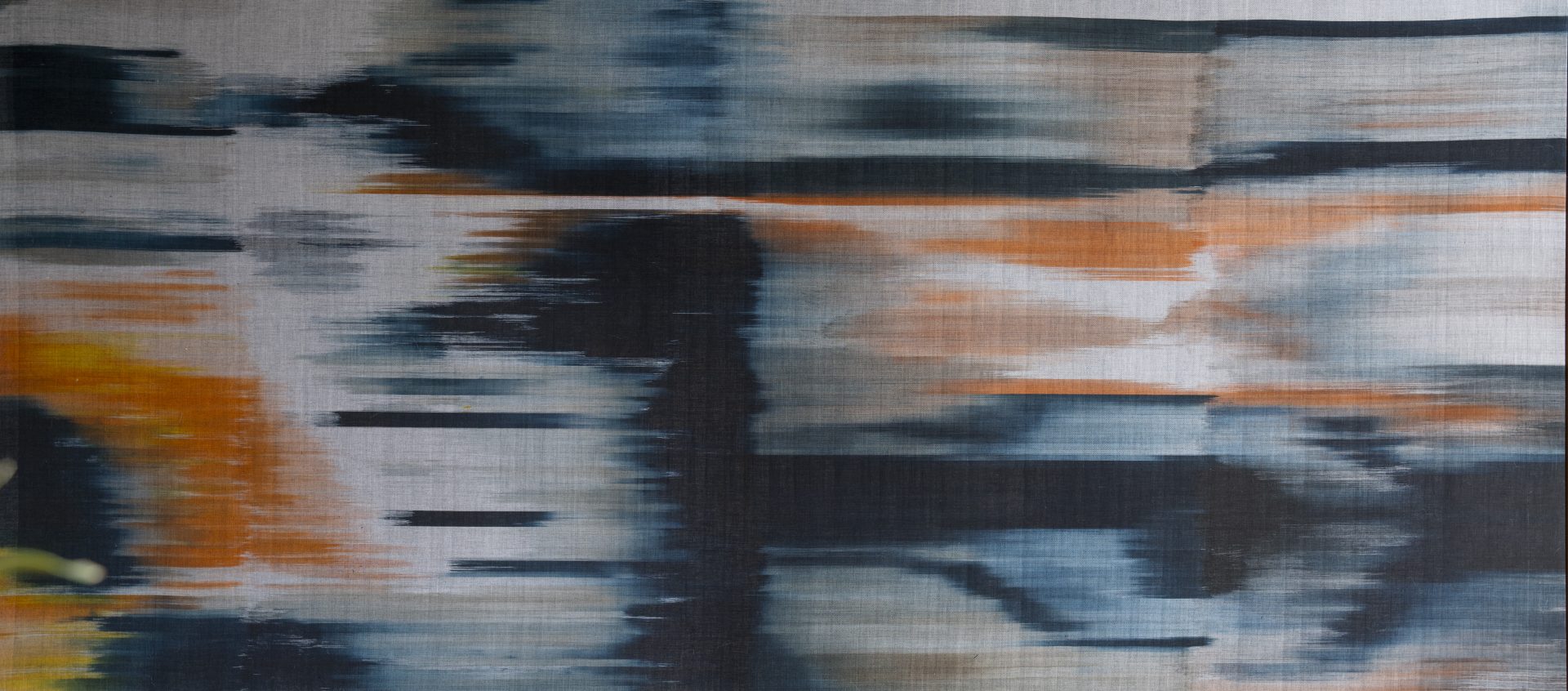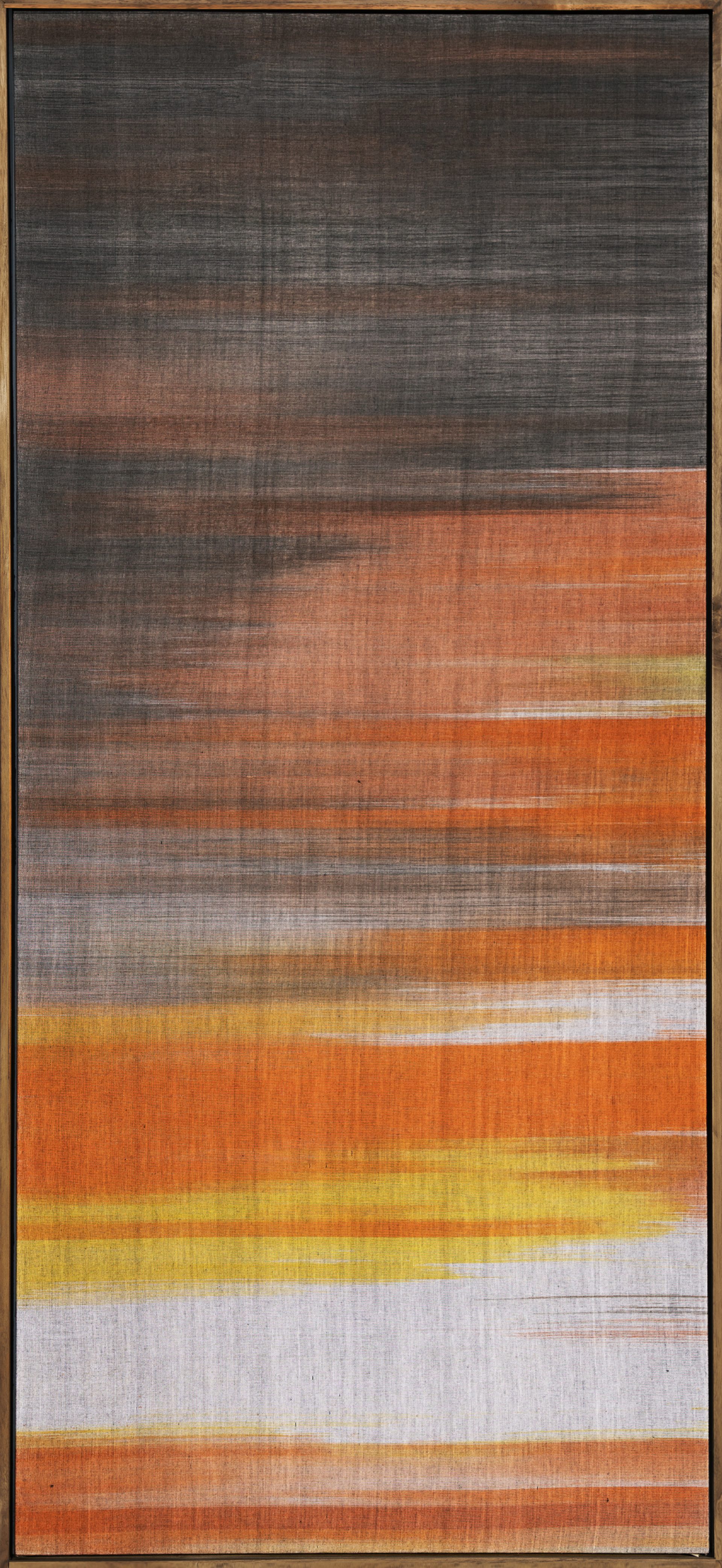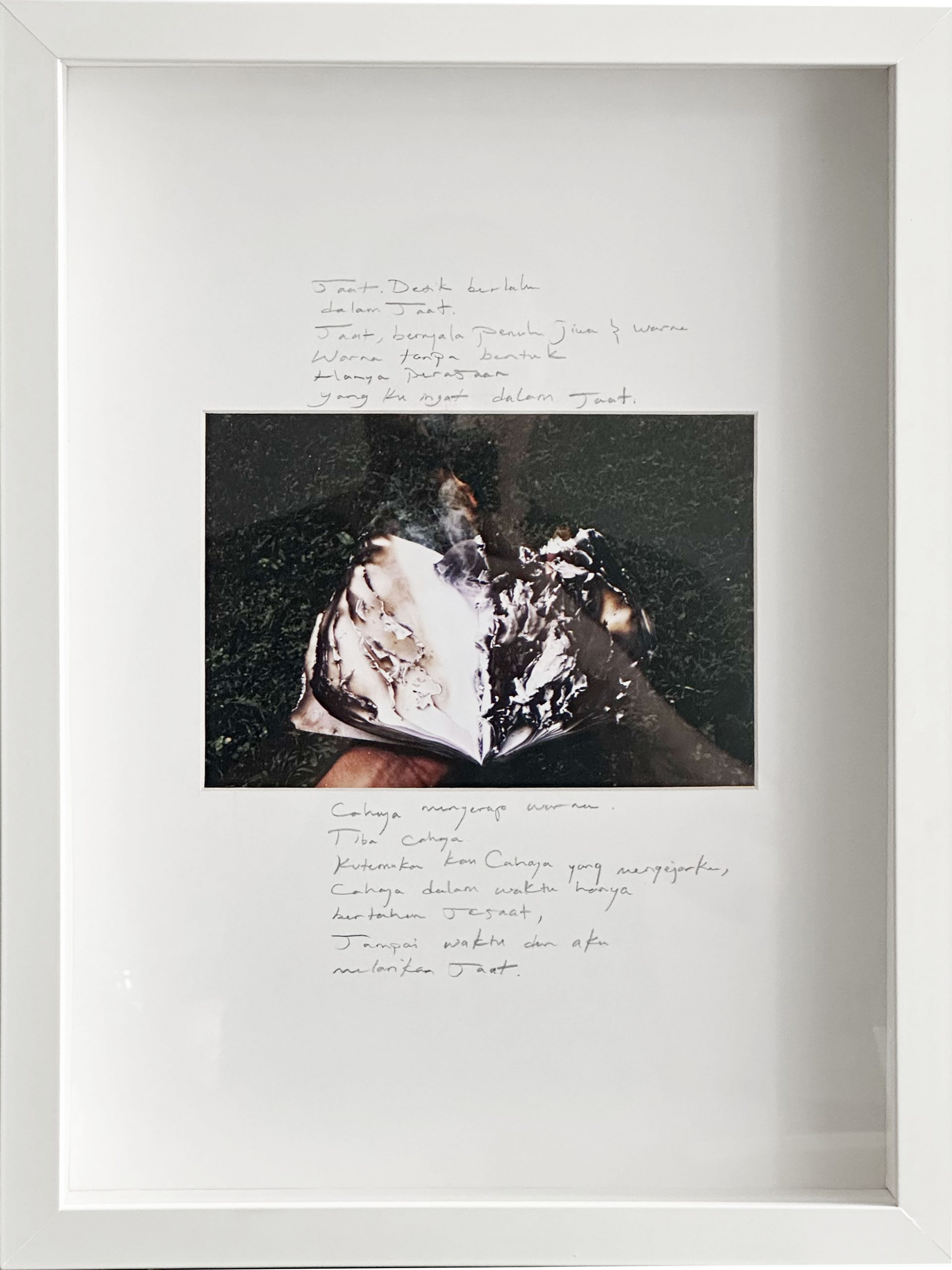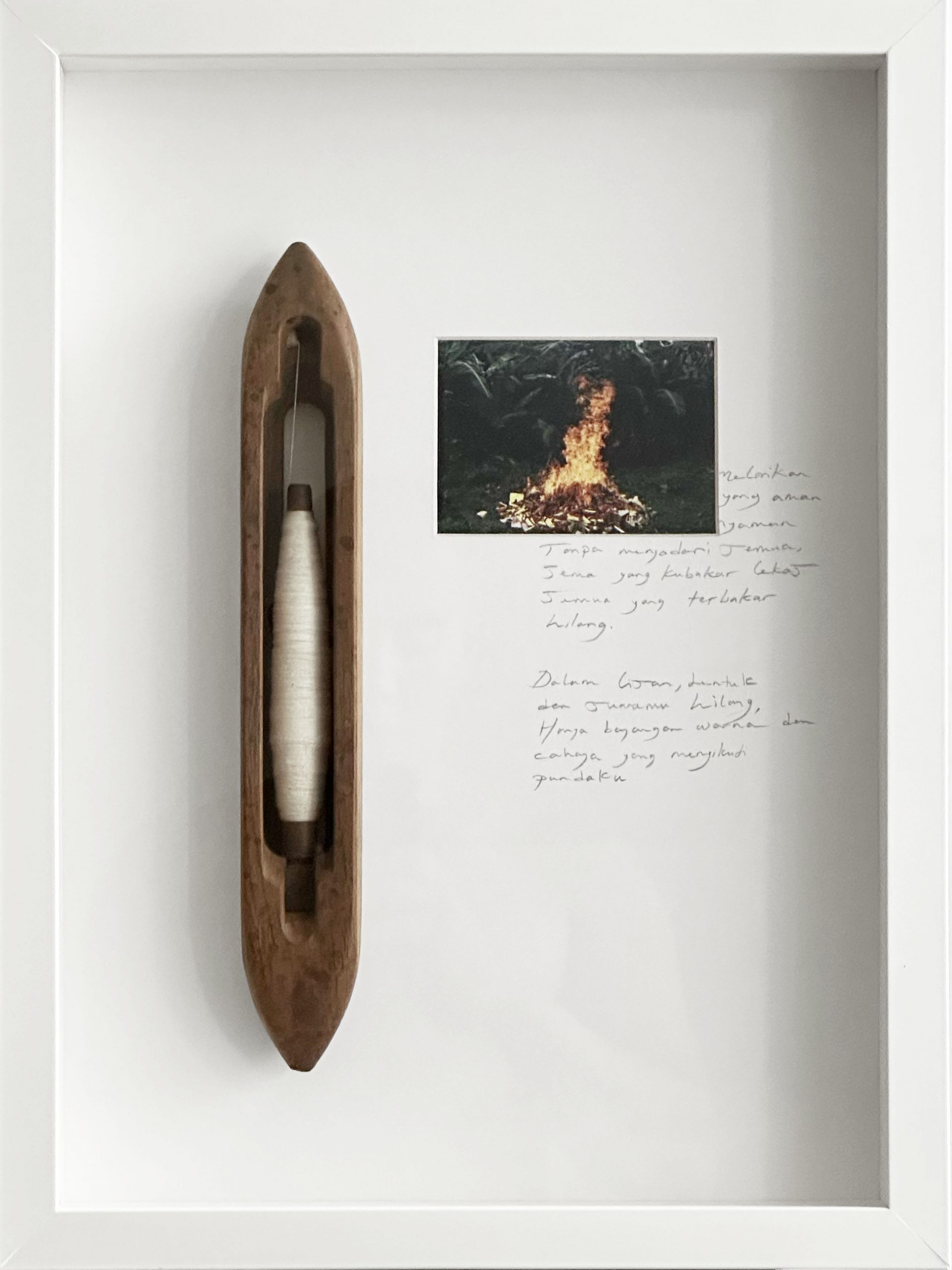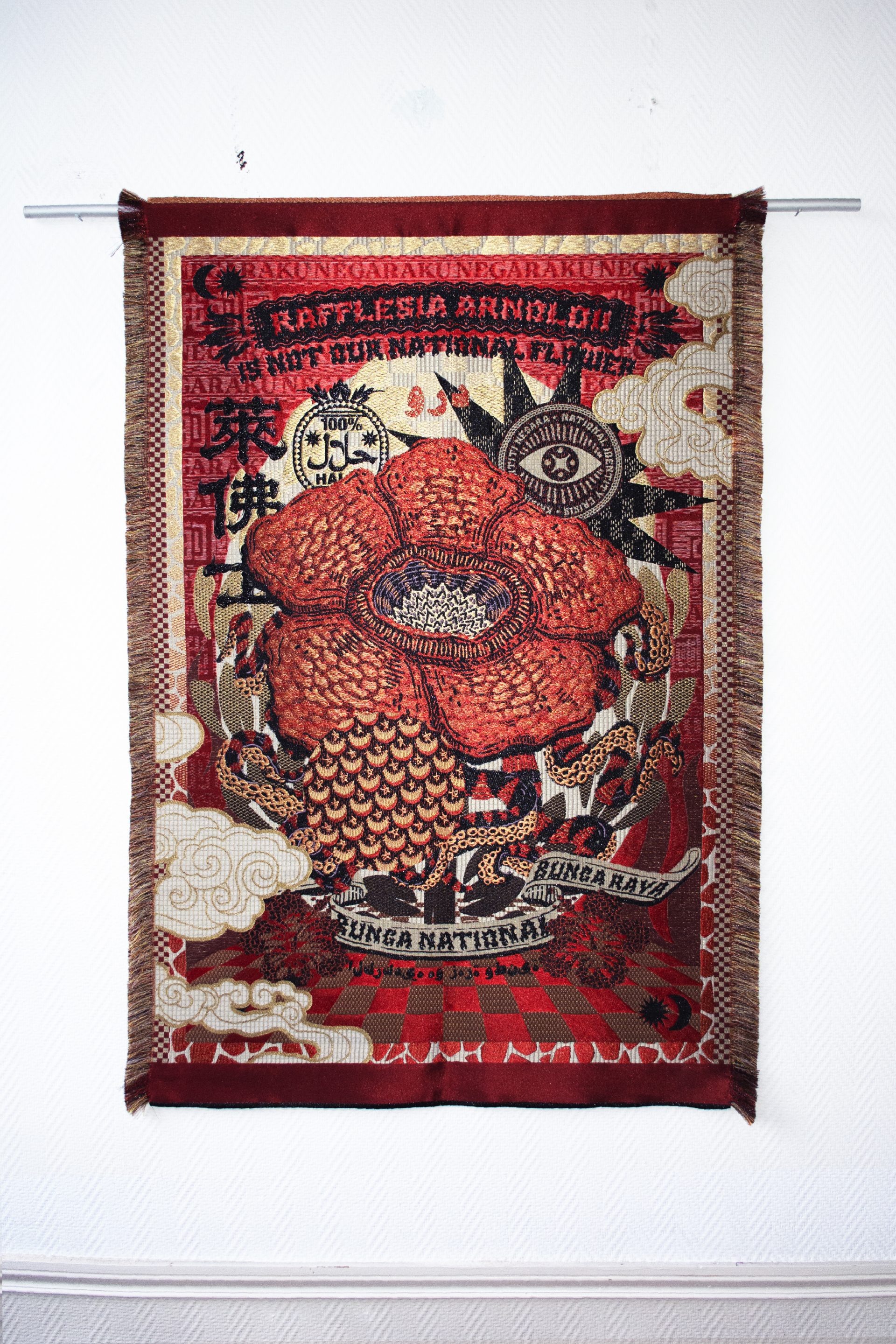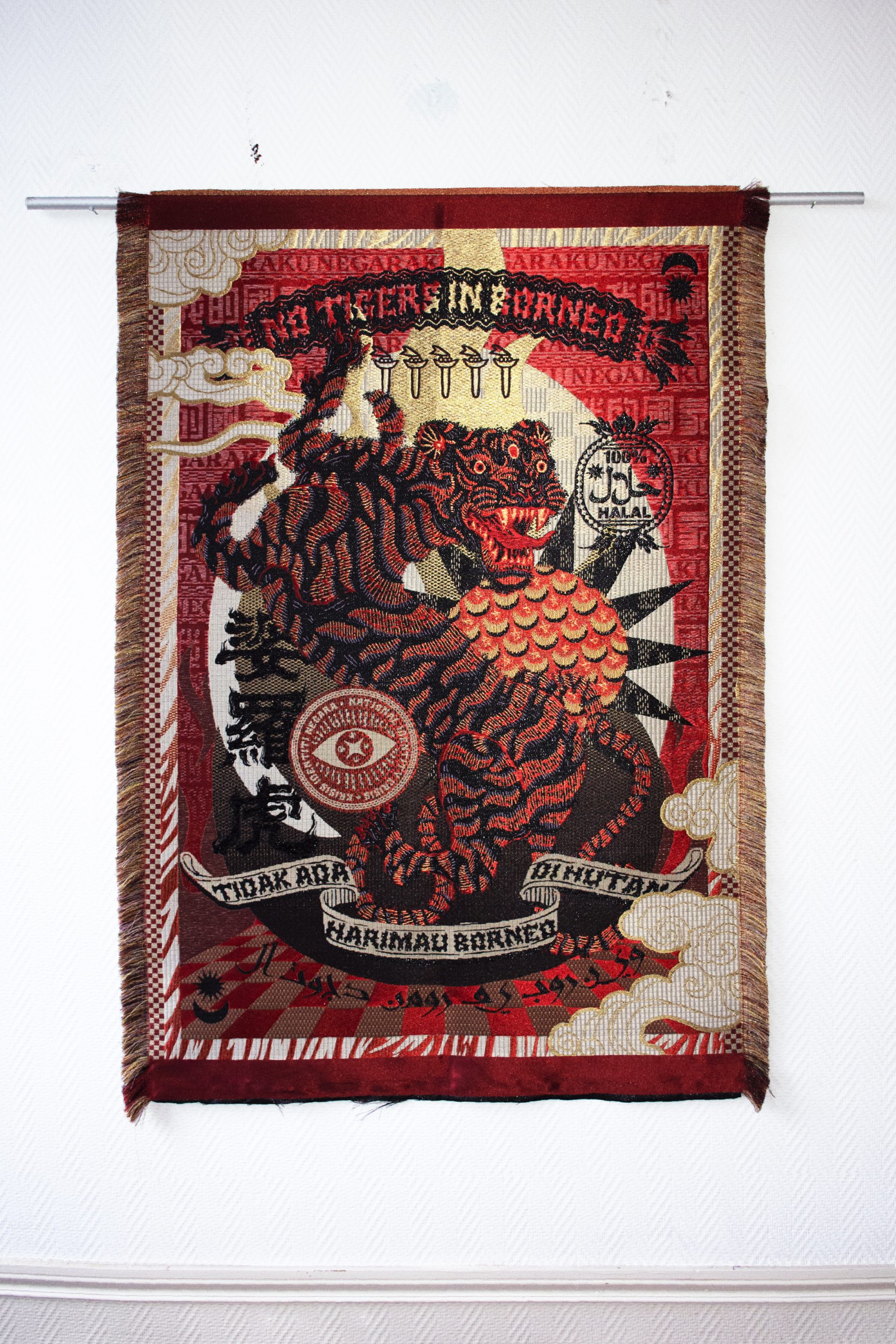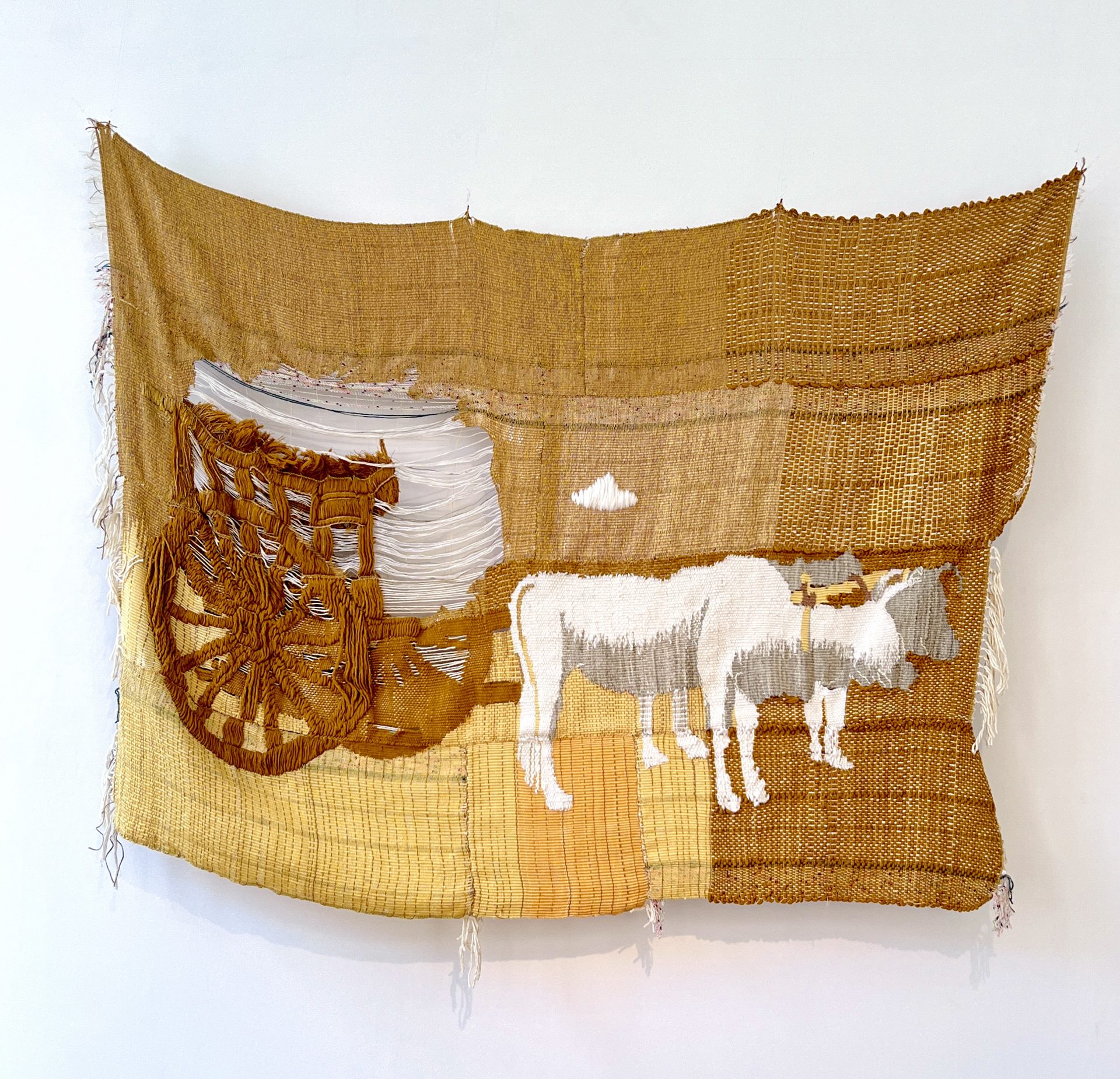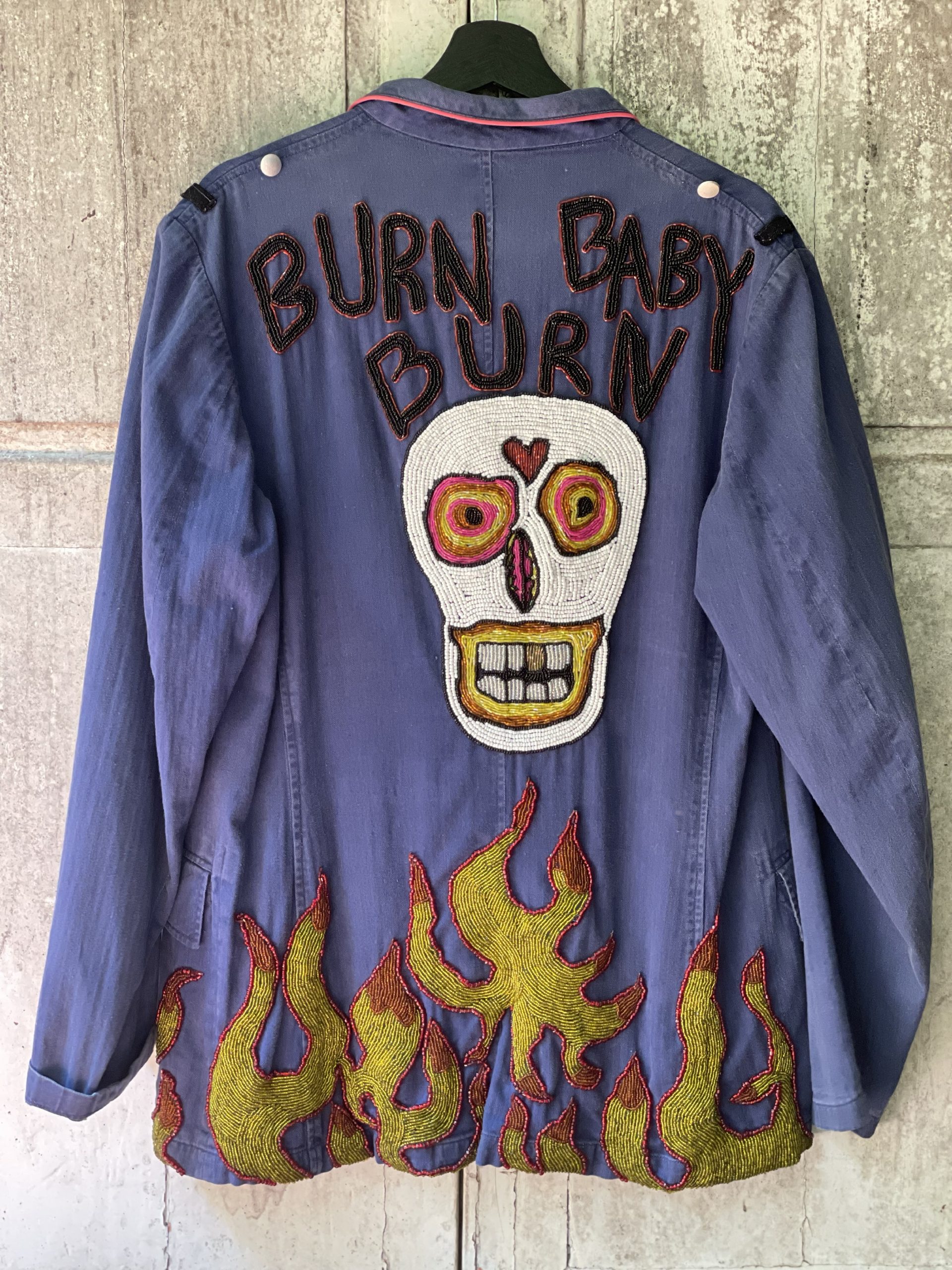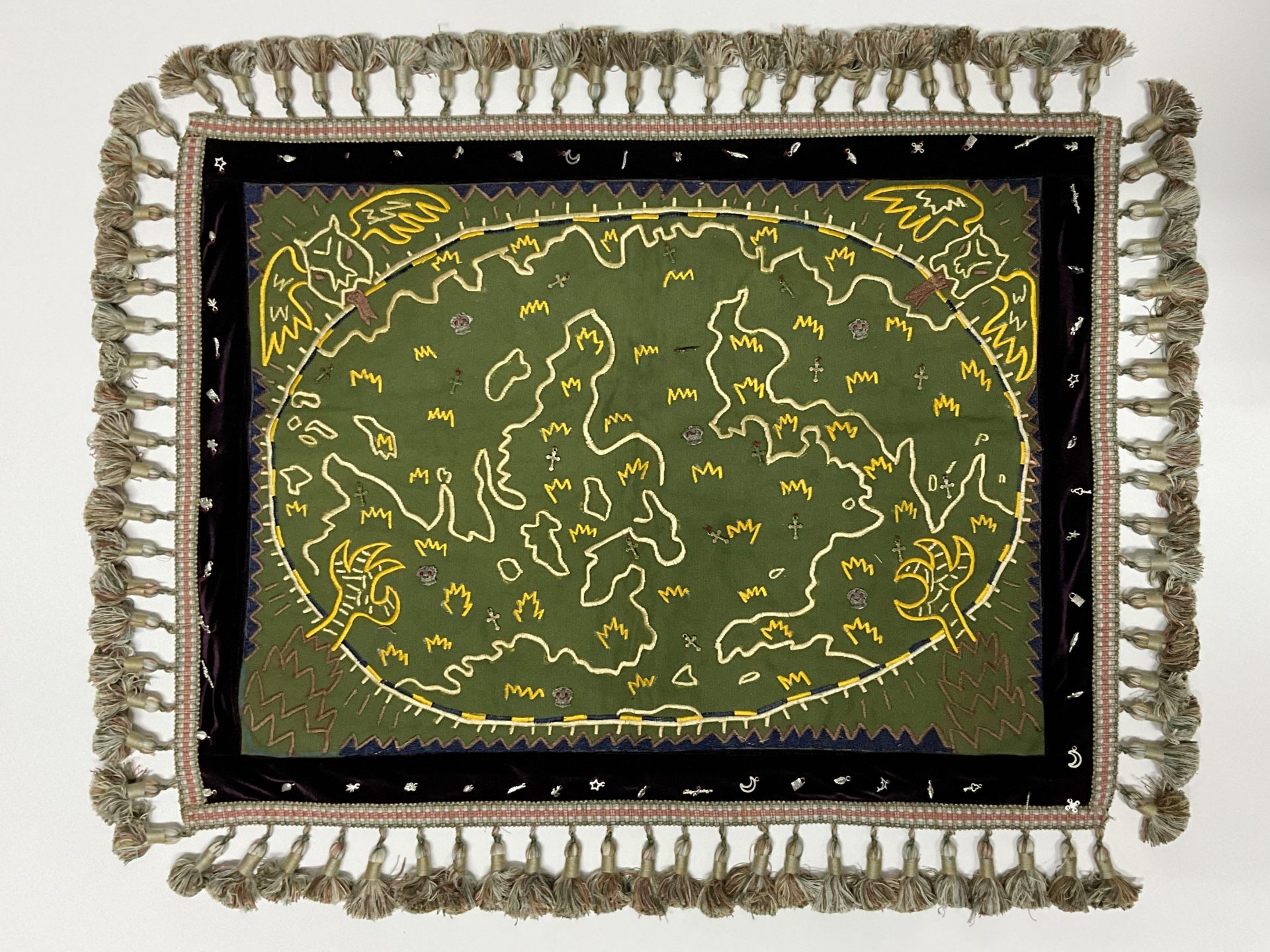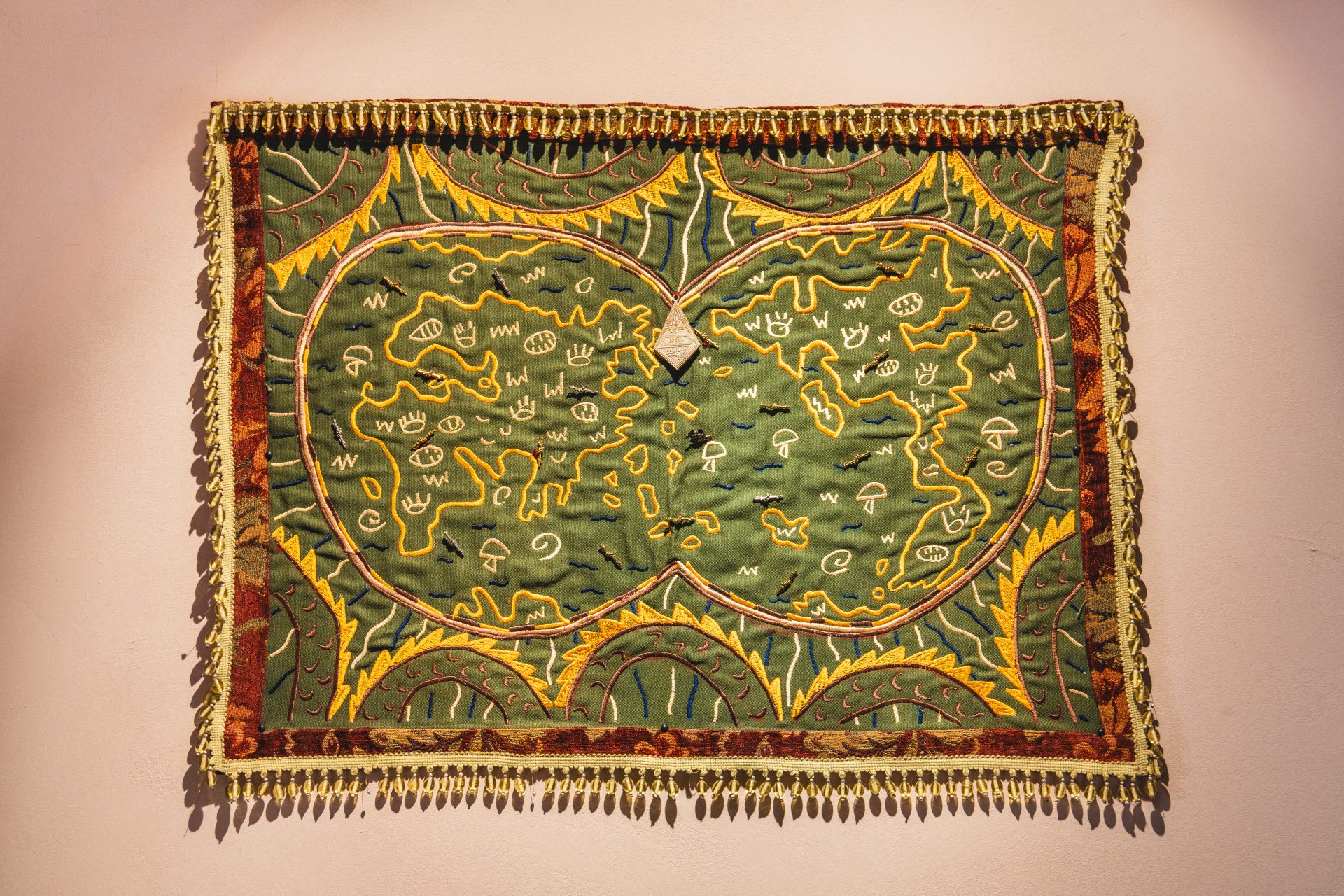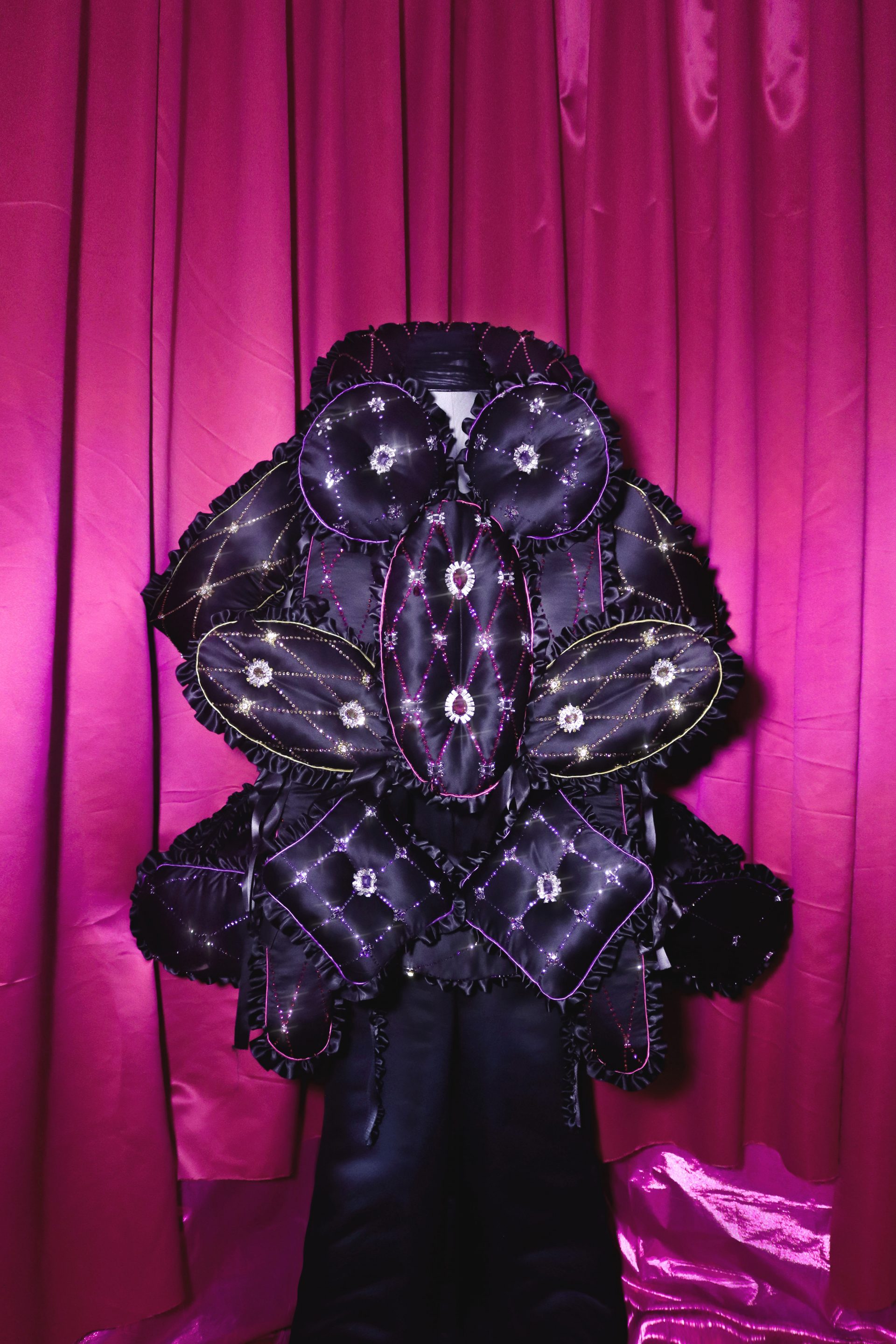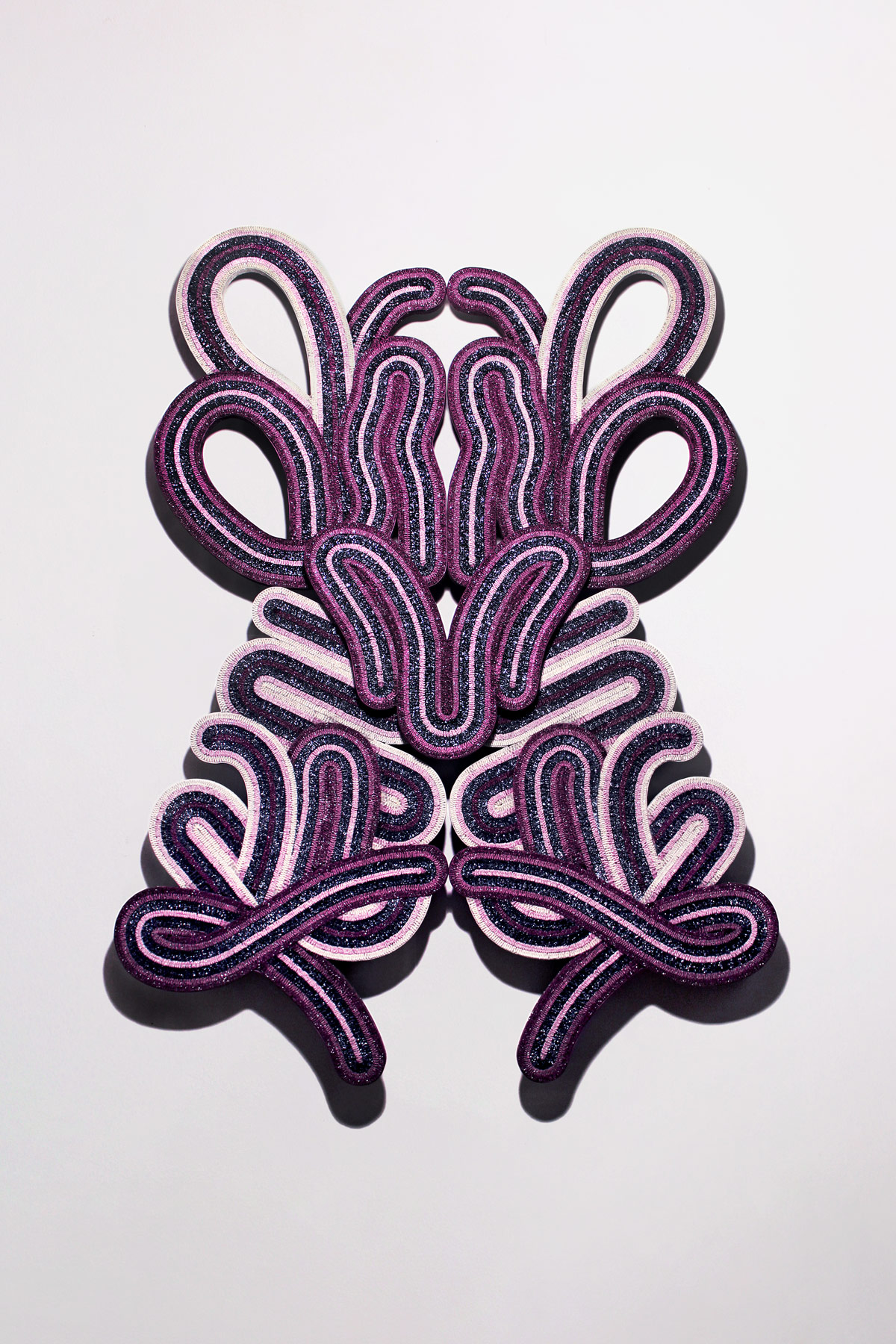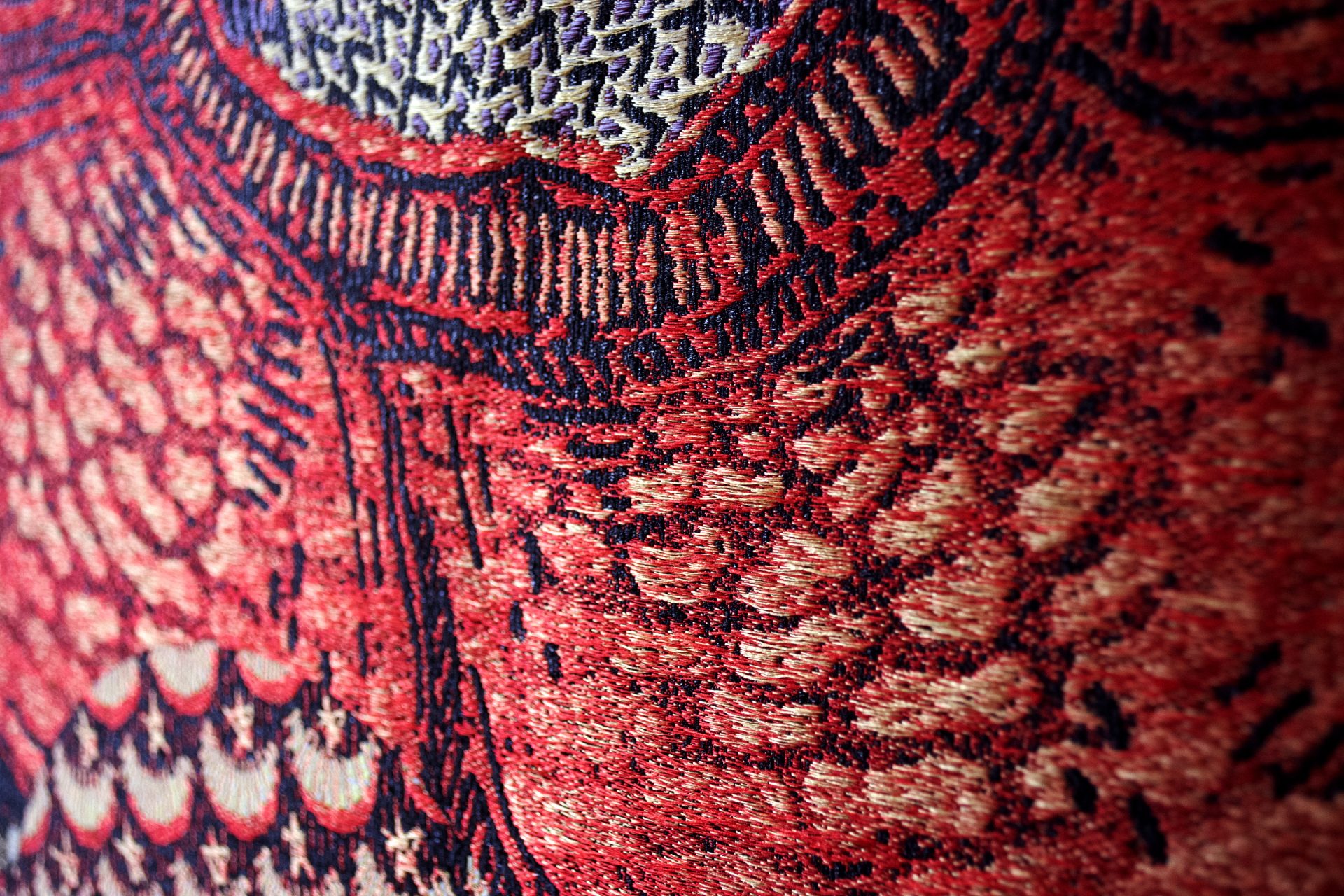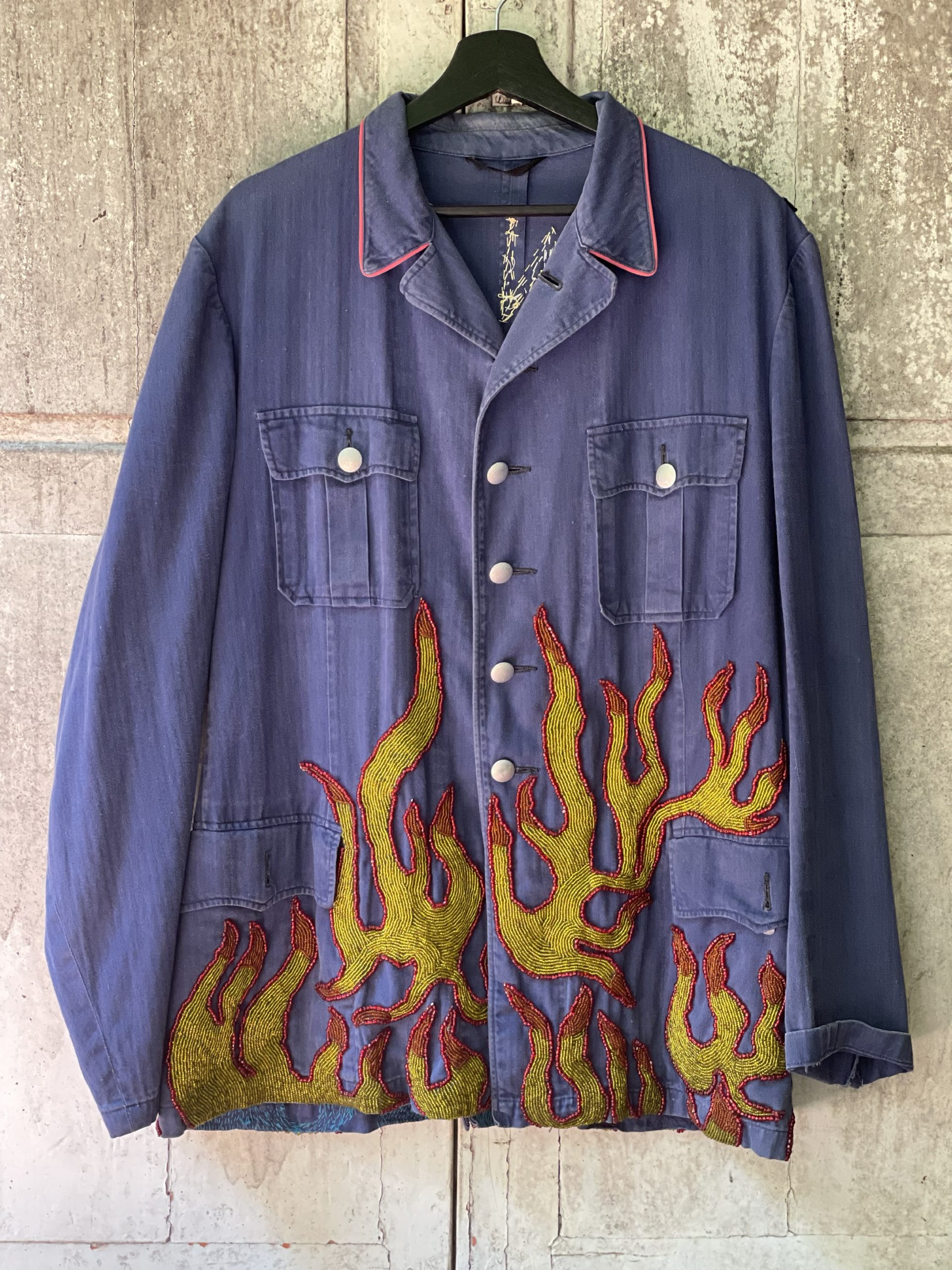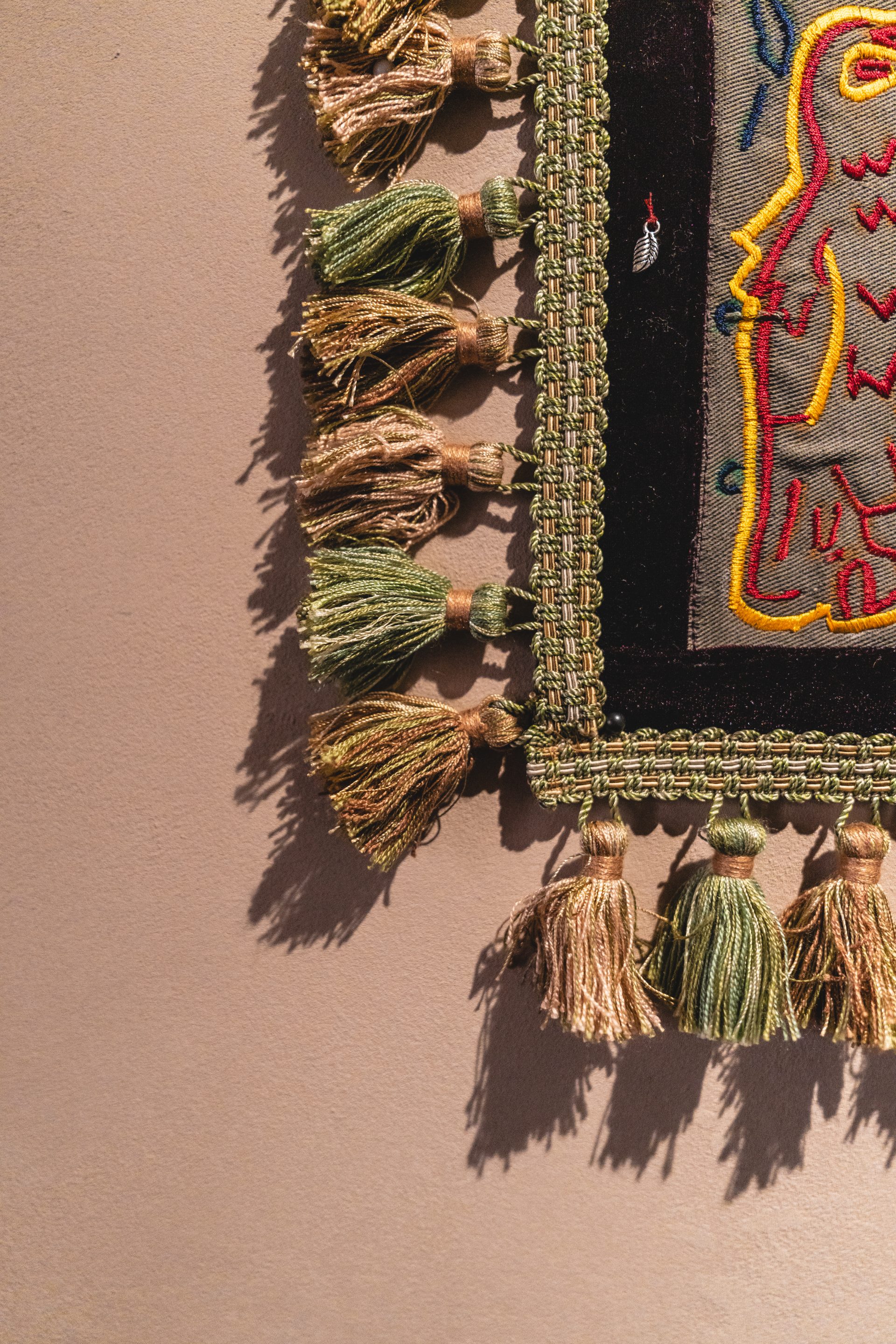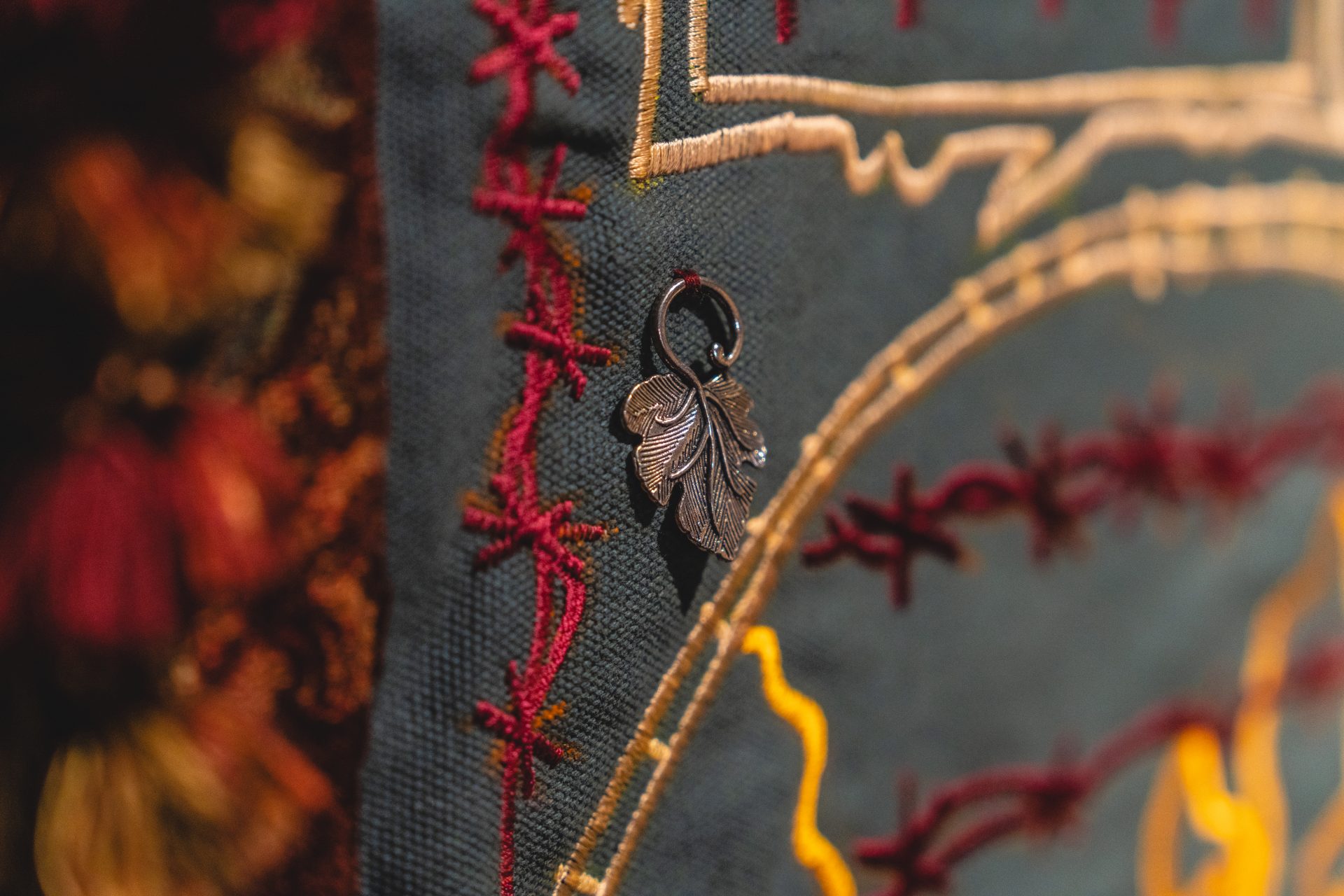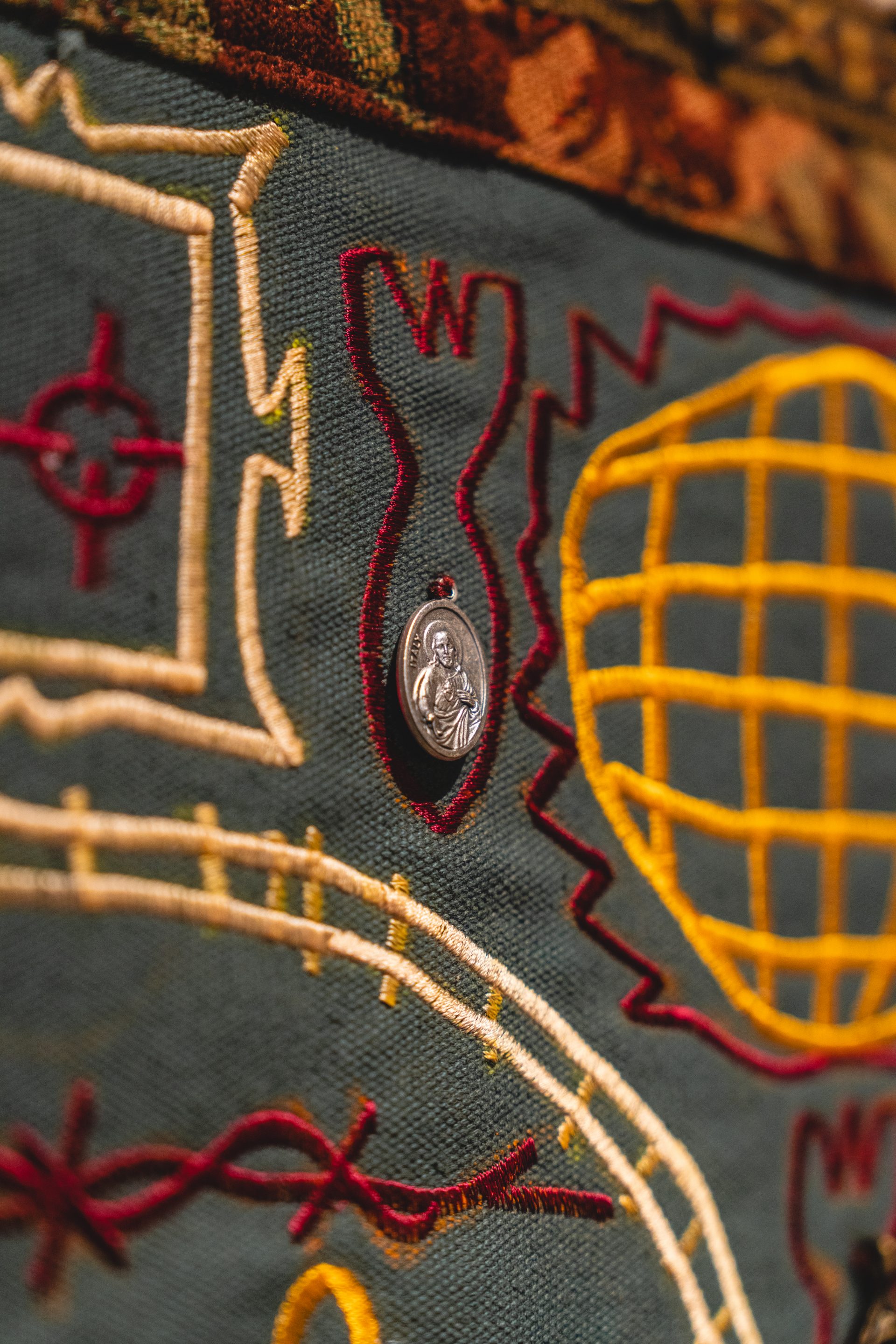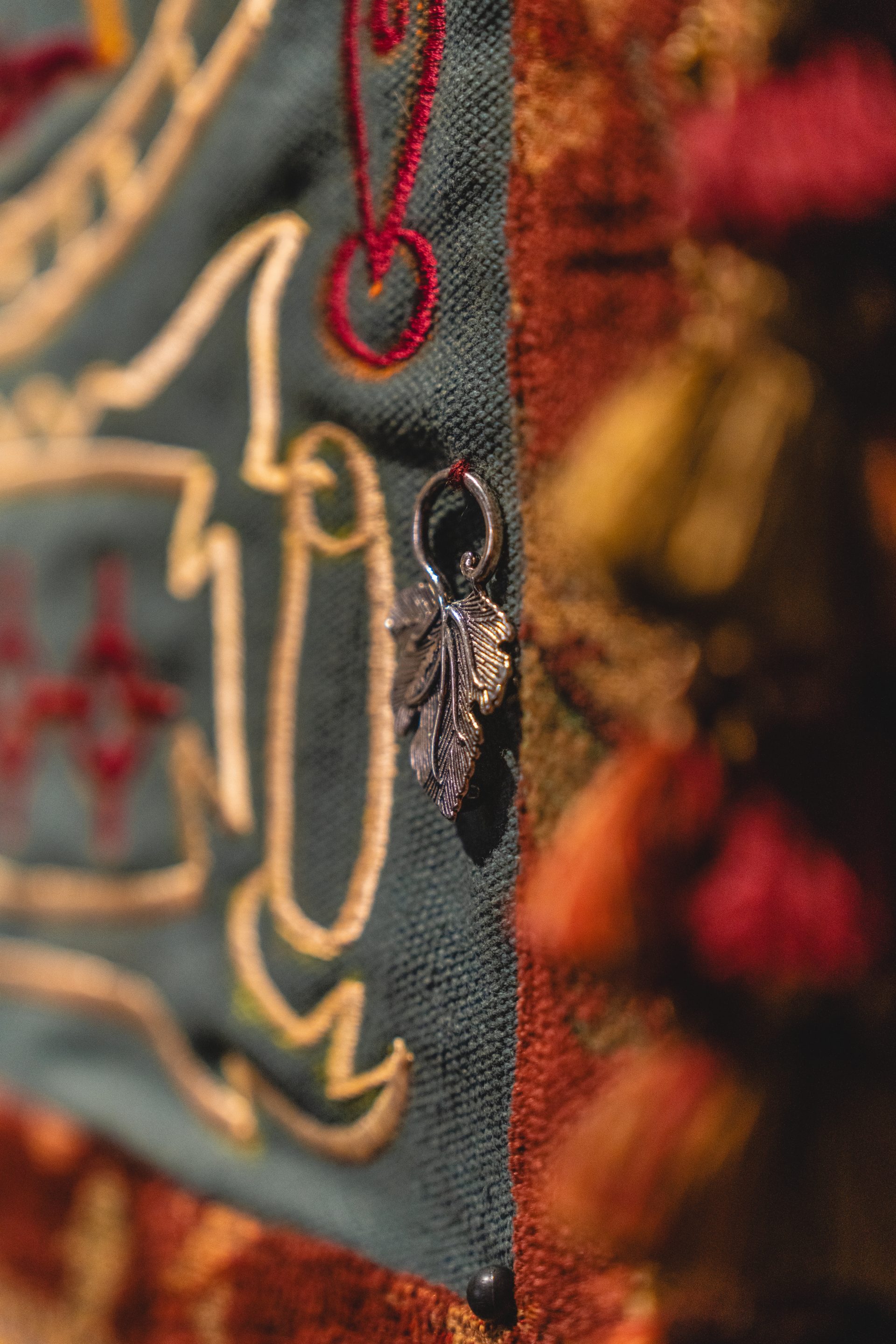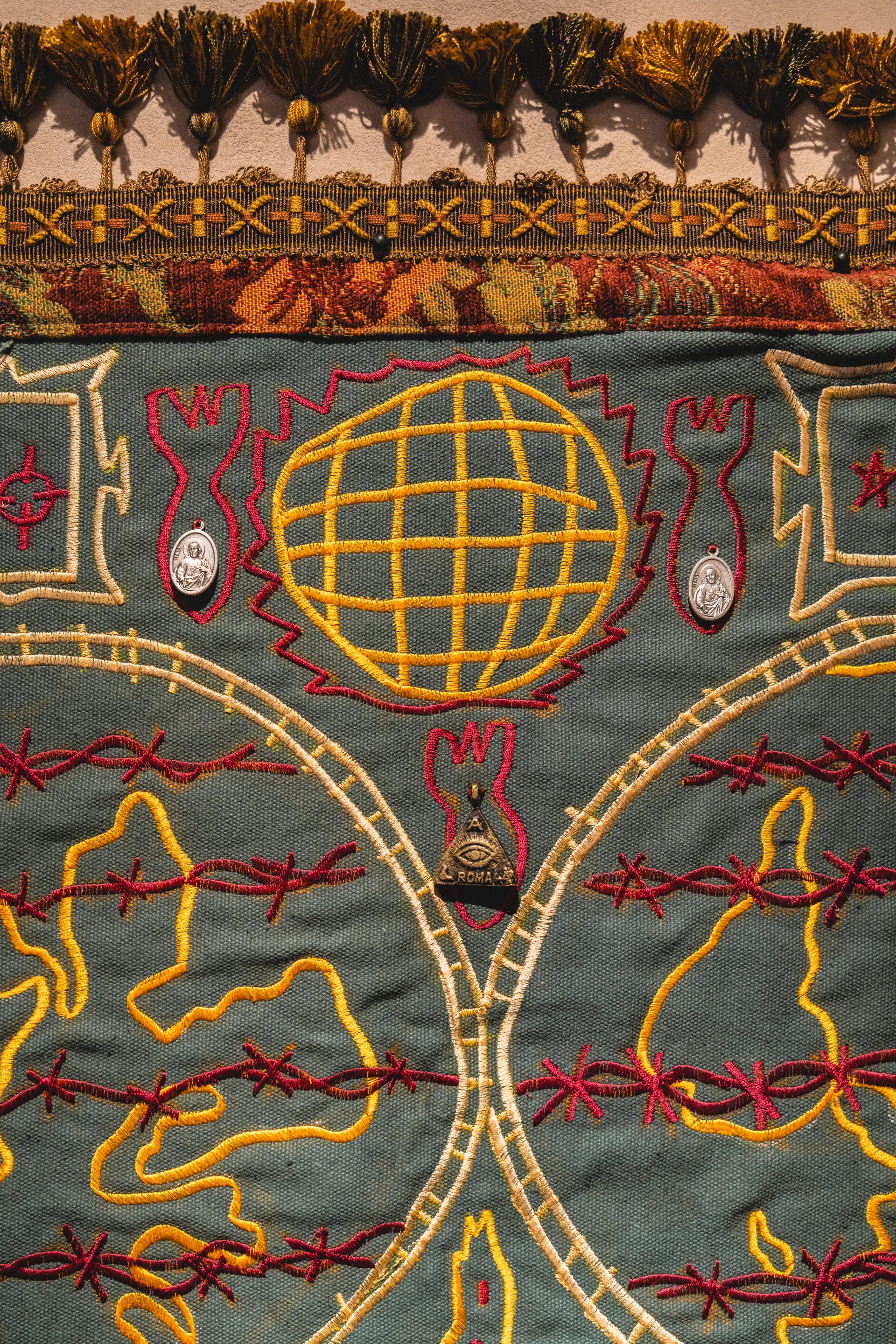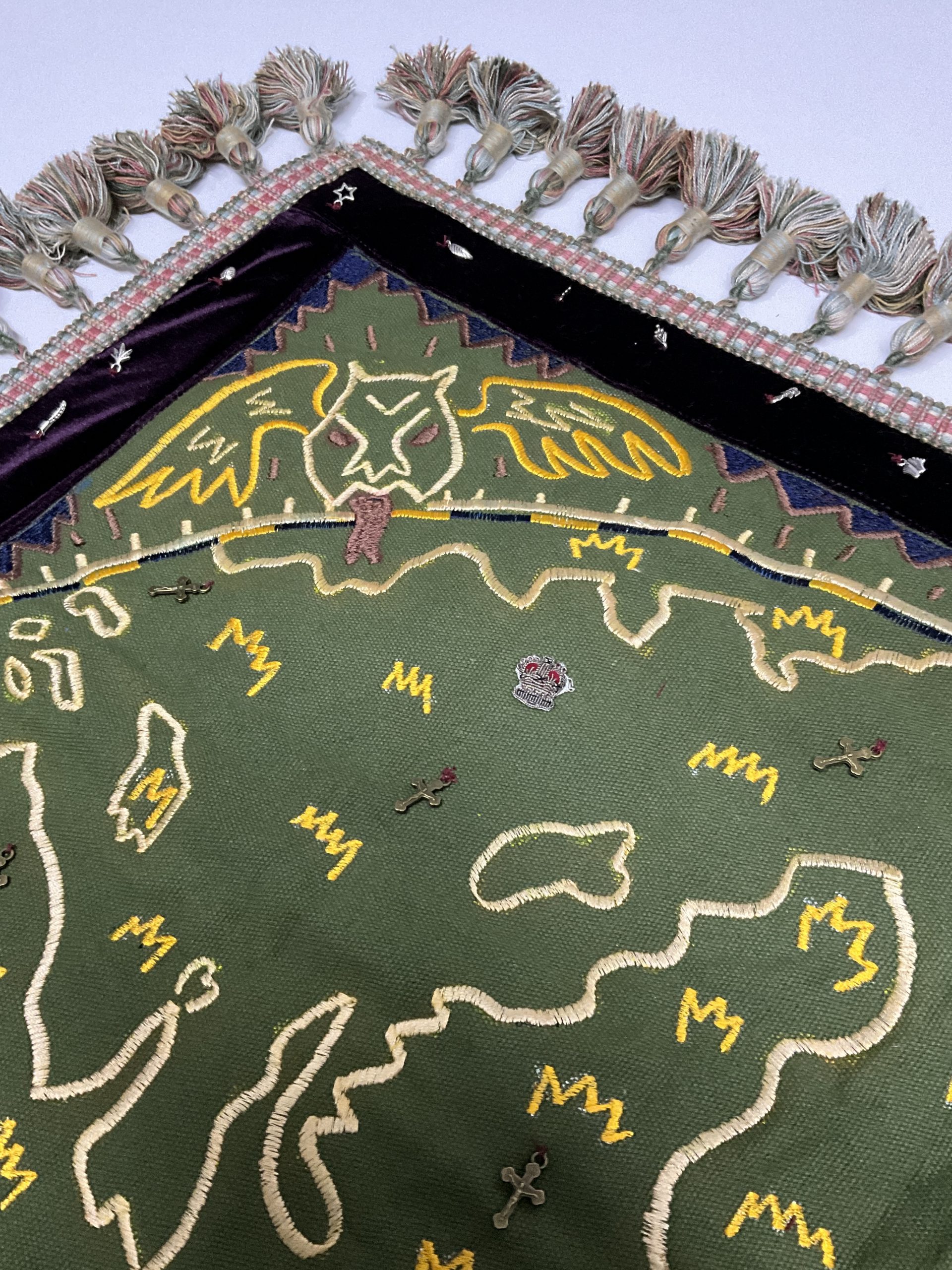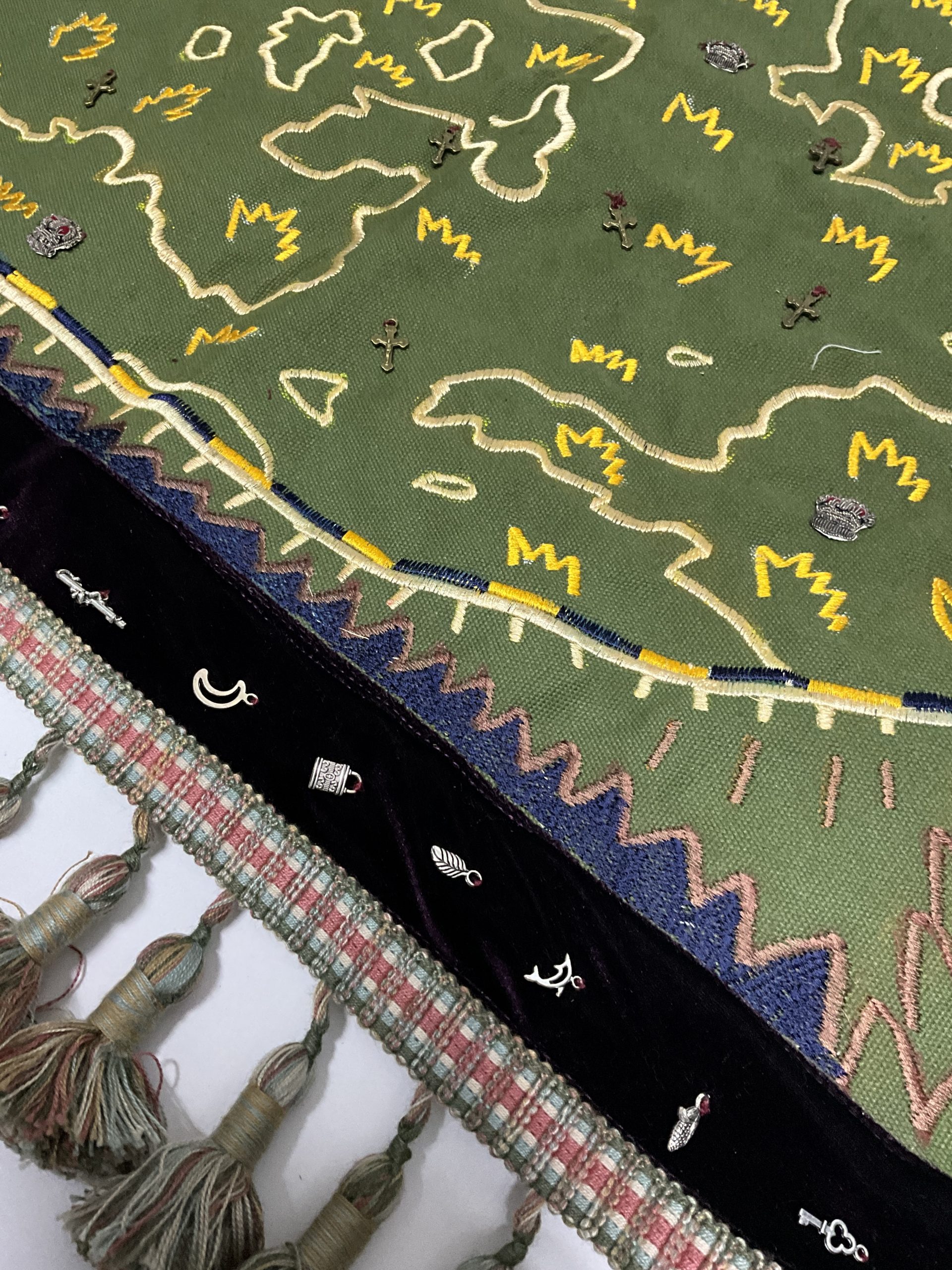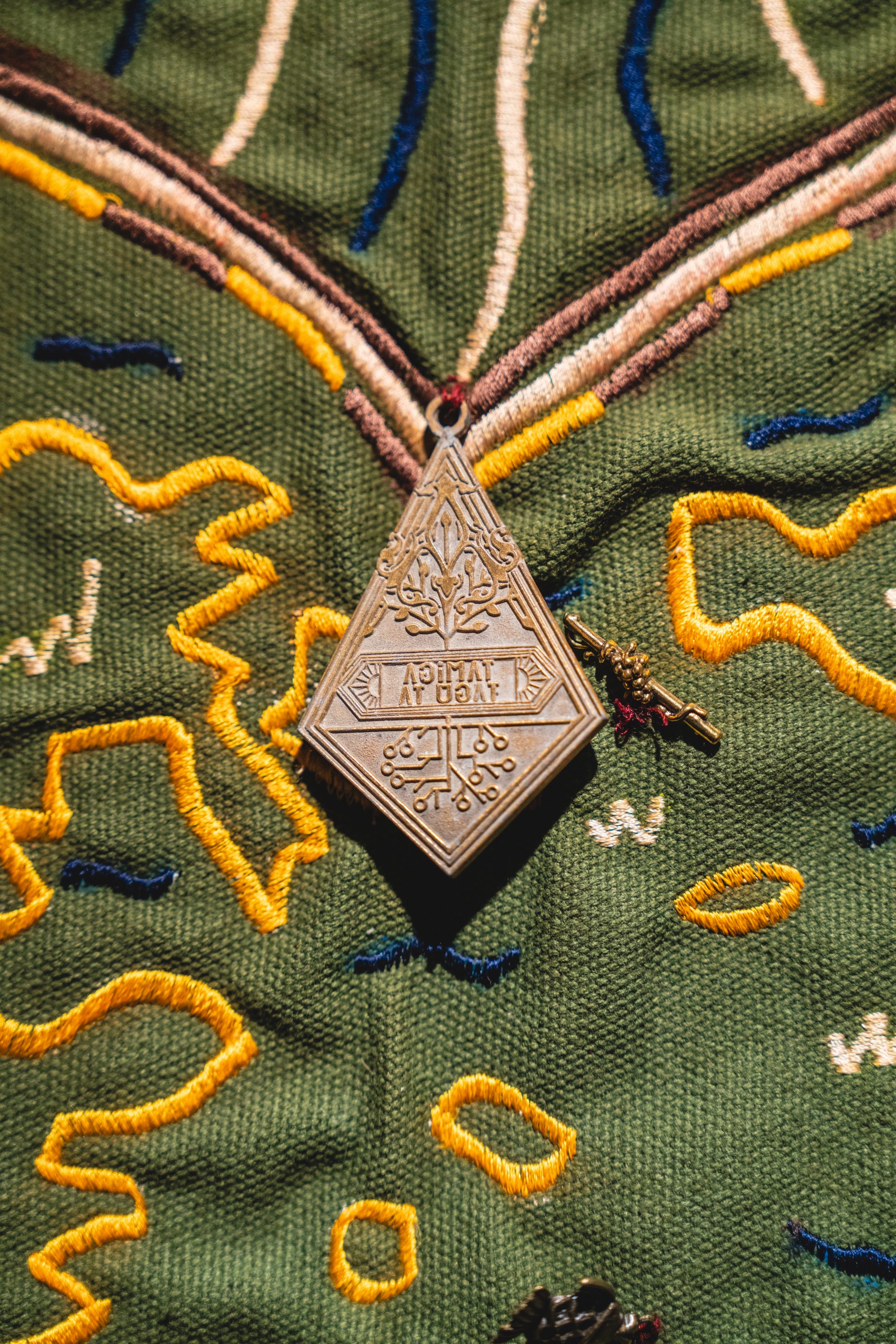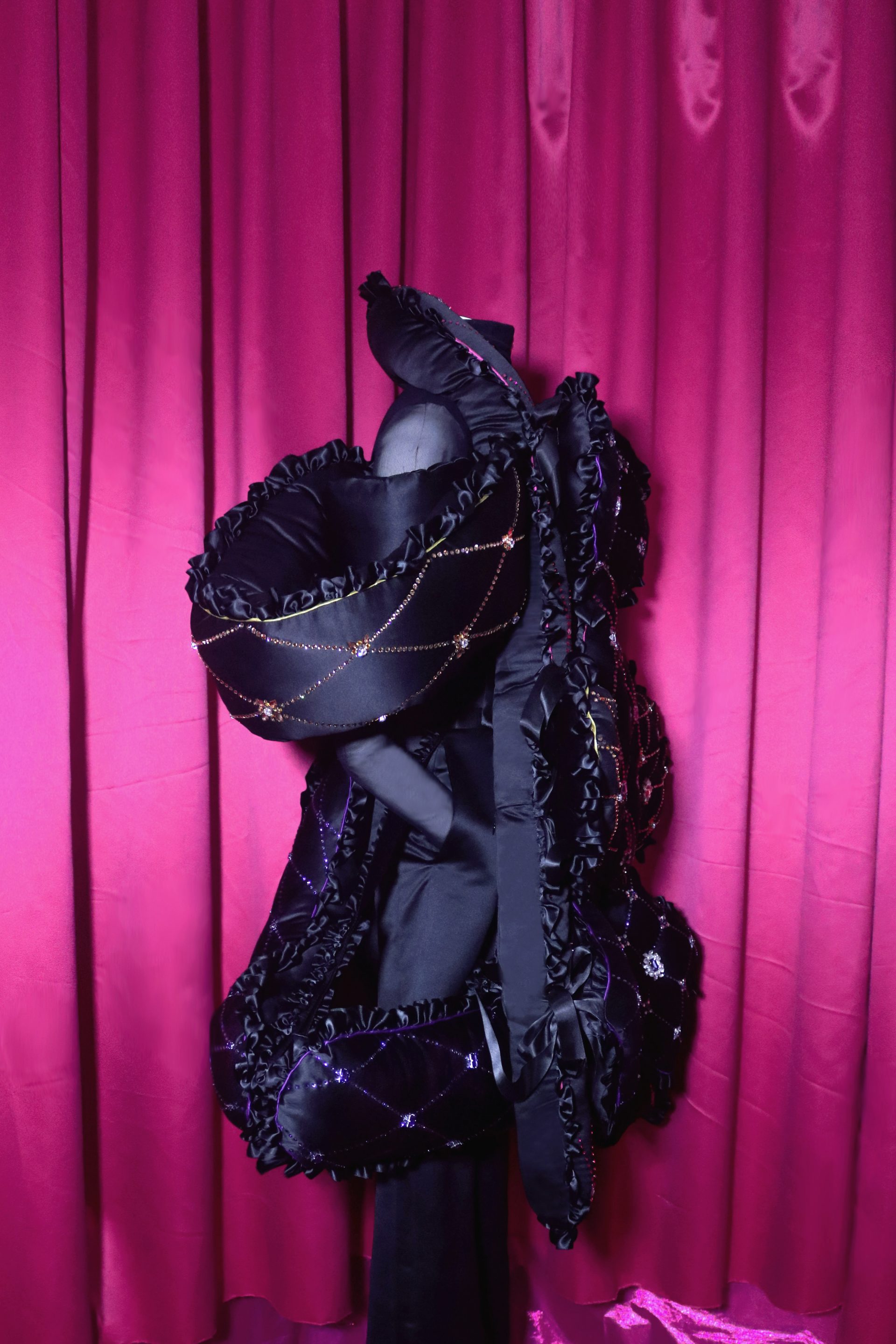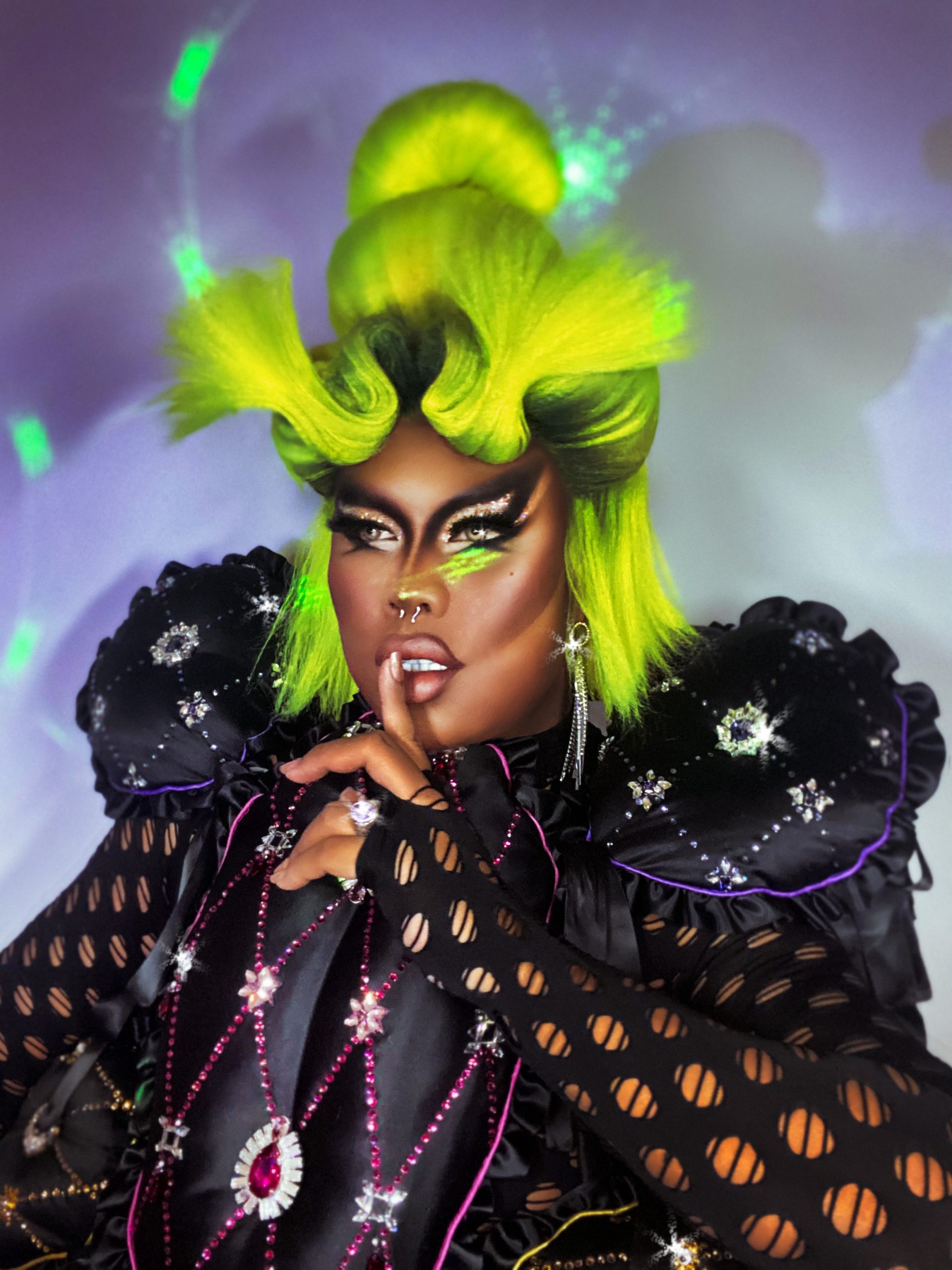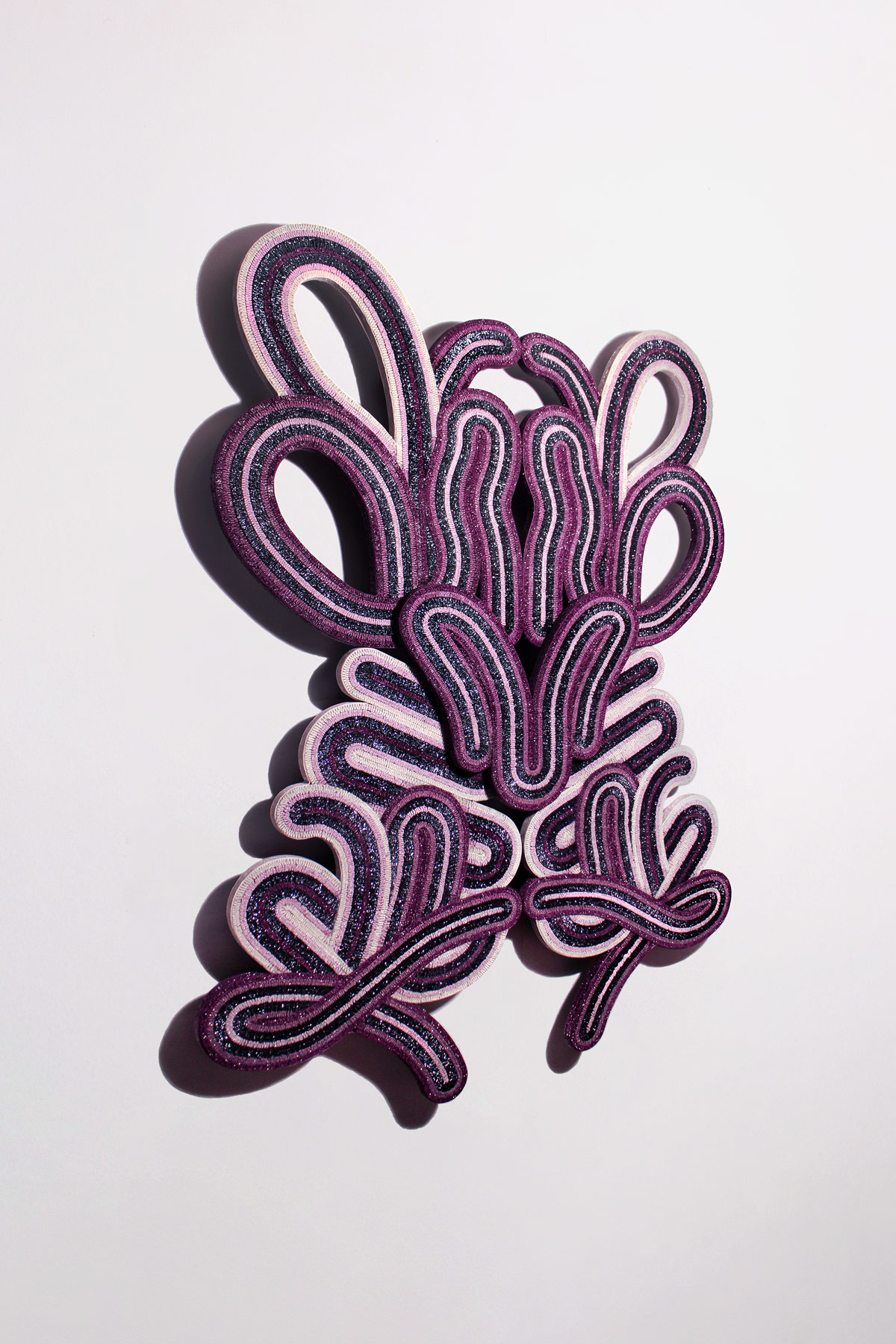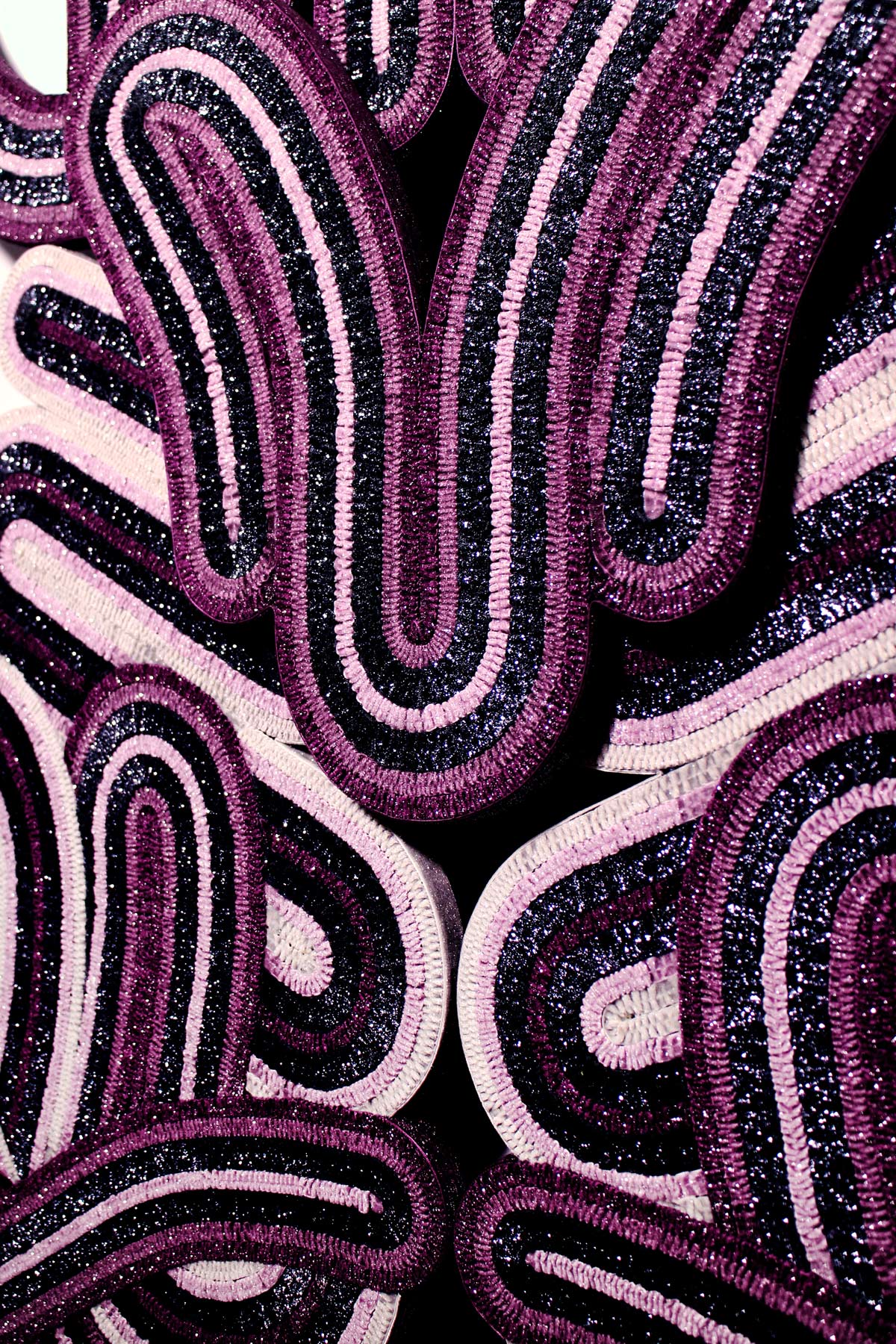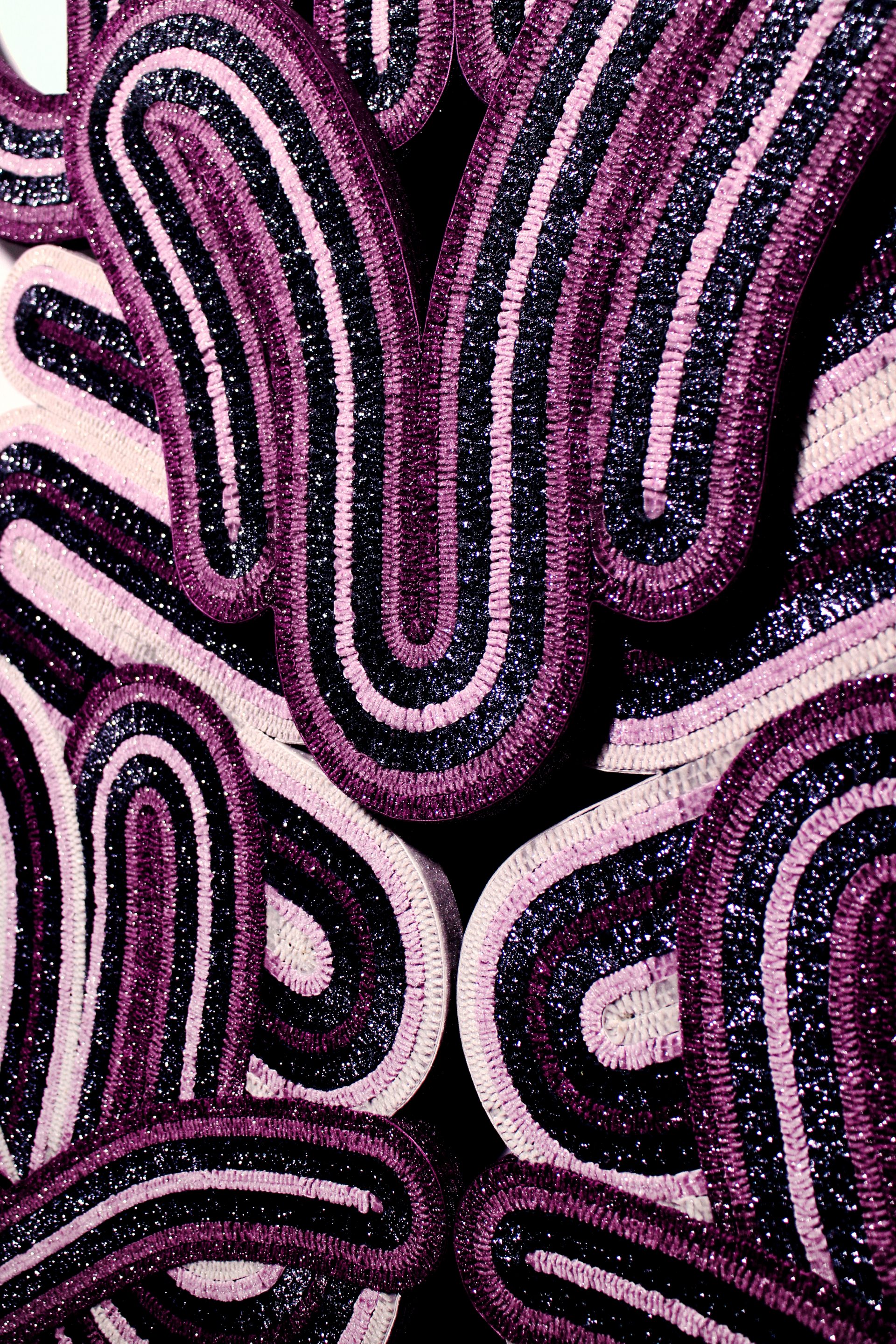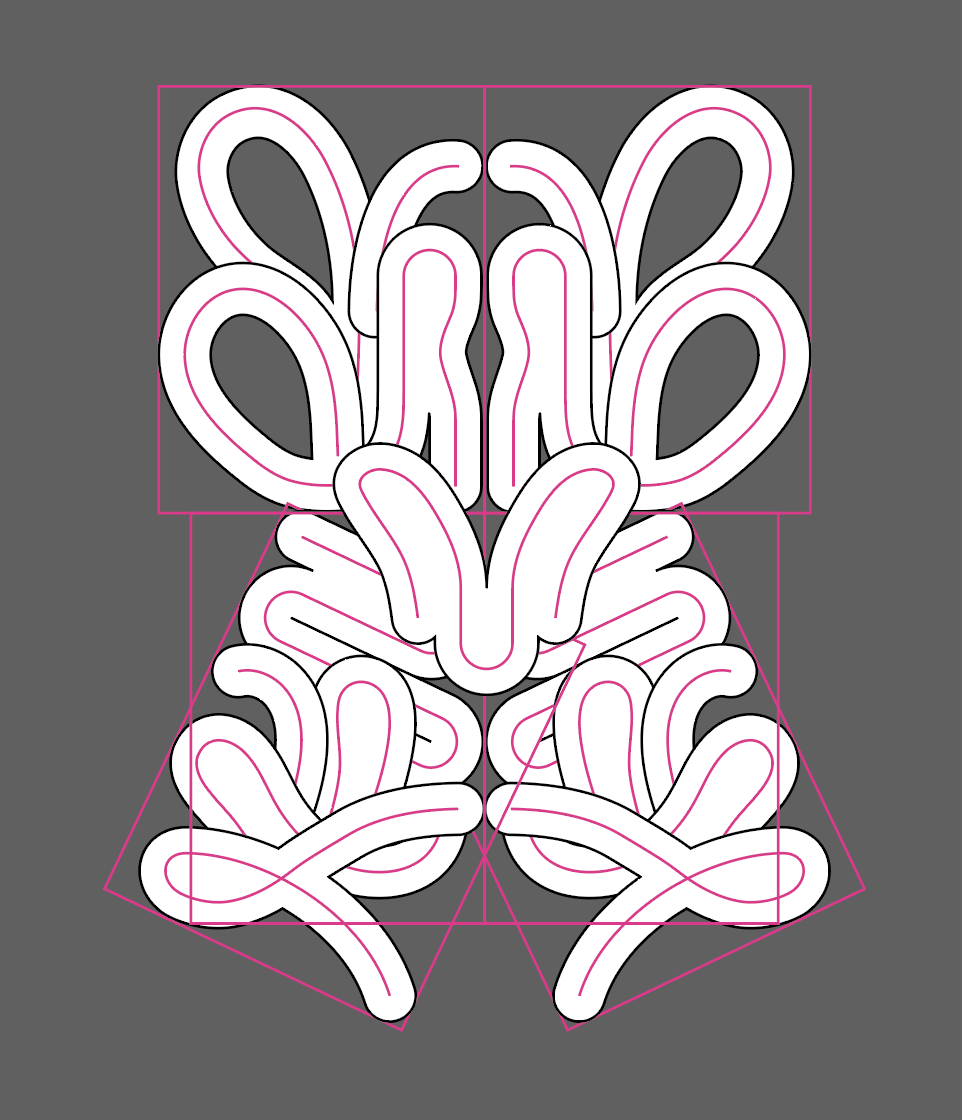Between The Lines

Between The Lines explores how contemporary artists engage with the medium of textile. One of the oldest forms of artmaking, textile has drifted in and out of the margins of art history, often sidelined as ‘women’s work’ or ‘craft’. The recent resurgence of interest in this medium may be attributed to a consideration of modes of artmaking and cultural expression outside of a Western modernist paradigm, and precipitated by the global pandemic lockdowns and rapid digitalization of the world which prompted a renewed interest in tactility and the handmade.
The exhibition’s title makes reference to the materiality of textile, composed from the interweaving of lines – its warp and weft. These vectors embody histories and the transmission of cultures and traditions, transformed by the hand of the artist into new narratives for our time.Between The Lines also explores textile’s subtext or its socio-political dimension, encapsulated in the processes of its creation, as well as its physical attributes of portability and apparent innocuousness – qualities that render textile an agile medium for conveying narratives of resilience and resistance. Last but not least, the exhibition brings together textile-based works that foreground crossroads and interstices, blurring the lines between creative disciplines, cultures and hierarchies.
Between The Lines is open to public from 29 Feb, 2024 – 26 May, 2024.

Alexander Sebastianus Hartanto reworks the traditional ikat technique and its symmetrical motifs into poetic abstractions – in the words of the artist, “paint(ing) memories in formless colours and haze, blurring the essence of what we can remember”, and deftly traversing the lines between painting and weaving, ‘fine art’ and ‘craft’. This labour-intensive process of creation also brings to the fore the repetitive and meditative nature of weaving, foregrounding the distinction between an older understanding of making as ritual or offering (as embodied in the Indonesian term sani) and the more modern concept of art as a finished object for display and circulation.
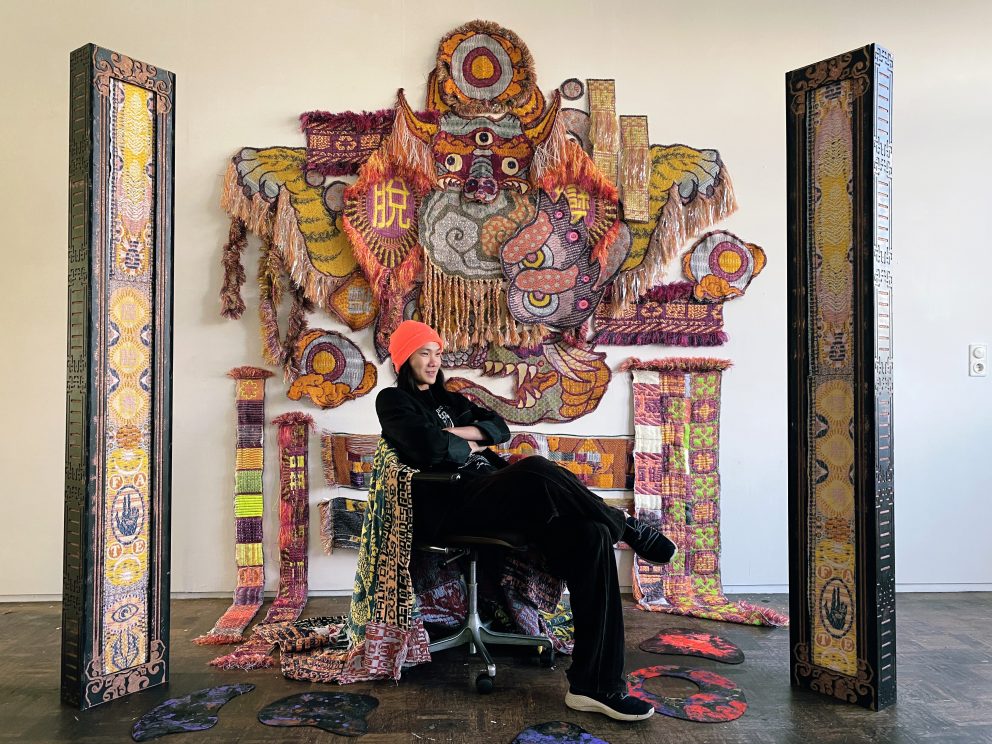
For Marcos Kueh, textile is the medium that the ancestors of his land used to weave their dreams, hopes and myths, and he draws on this lineage to express his conflicted position as a native of Borneo negotiating his identity vis-à-vis a dominant narrative of and about nation originating from Peninsular Malaysia, as well as his sense of self living and working abroad in the Netherlands where cultural production from his homeland is often framed within an ethnographic context. Tapping on his background in graphic design, Kueh critically examines national symbols and emblems, questioning their relevance and the fictions or narratives they embody, which in turn, frame identity formation and understanding.
 Cheong See Min’s fiber-based works foreground the social histories of the very materials from which they are woven. Much of her recent practice is informed by research – both archival as well as anecdotal – into the colonial history of plantations in Malaysia, and the cost of sustaining the production and export of commercial crops from Peninsula Malaysia to England. Composed from gambier and pineapple leaf fibre, her tapestry of a bullock-drawn cart and its companion piece of a coolie bearing a basket of crops, make visible the natural resources and labour expended in these extractive colonial practices, otherwise largely occluded from historical accounts.
Cheong See Min’s fiber-based works foreground the social histories of the very materials from which they are woven. Much of her recent practice is informed by research – both archival as well as anecdotal – into the colonial history of plantations in Malaysia, and the cost of sustaining the production and export of commercial crops from Peninsula Malaysia to England. Composed from gambier and pineapple leaf fibre, her tapestry of a bullock-drawn cart and its companion piece of a coolie bearing a basket of crops, make visible the natural resources and labour expended in these extractive colonial practices, otherwise largely occluded from historical accounts.

Jakkai Siributr draws on textile’s socio-political dimension, and has received critical acclaim for his tapestries that give voice to marginalized communities and victims of violence or trauma. Their lush and haptic surfaces aside, the medium of ‘conflict textiles’ offers individuals a more hospitable and communal experience for approaching resolution and reconciliation, compared to the often impersonal and officious legalese of tribunals and courts. For his Phayao-a-Porter series, Siributr has collaborated with artisan communities in need of employment to translate these concerns into a line of garments embroidered with images and messages that speak to the issues of our time. The beauty of these garments is their innocuousness, alongside their ability to carry a powerful social and political charge. Creative visionaries such as designer Katherine Hamnett and artist Tang Da Wu have deftly drawn on these qualities to perform acts of protest, by donning items of clothing emblazoned with pointed messages during their audience with prominent figures in power, and Siributr’s embroidered works in this exhibition speak in many ways to this legacy, marrying art, craft and design in wearables that jolt our awareness of urgent social issues.

The portability of textile, and the tendency to write it off as ‘craft’ or ‘domestic object’ also means that this medium is able to evade surveillance, to slip ‘between the lines’ and be easily transported and circulated, freed from constraints that may include taxation and censorship. Cian Dayrit harnesses these qualities in a series of tapestries that mischievously skew antiquarian maps, upend and write over them with the artist’s notations that seek to undo centuries of power and dominion. Dayrit envisions these exercises in counter-cartography as small, agile works that can make their way to corners of the globe, “discursive objects that express the longingness to correct systemic injustices”.

Working between the lines of tangential creative disciplines – fashion and fine art – Samuel Xun presents two works that trace the evolution of his practice, from a three-dimensional wearable into a sculptural wall-bound work composed from materials more conventionally found in the apparel industry. Even when he was working along the lines of fashioning wearables, Xun’s practice was very much informed by visual art. In his earlier creations for instance, one can find references to Jeff Koons’s balloon sculptures, and the voluptuous excess and luxury of Baroque and Rococo, which have been translated into the FEMBUOYANT! series of soft sculpture wearables. Xun’s work threads between conventional creative silos, offering open-ended possibilities of engaging with notions of ‘art’ and ‘craft’ and bridging the worlds of ‘culture’ and ‘subculture’.
Curated by:
Tan Siuli
With thanks to:
All artists
Ashley Chiam
Sharon Cher
Flowers Gallery
ISA Art Gallery
The Back Room KL
The Institutum


